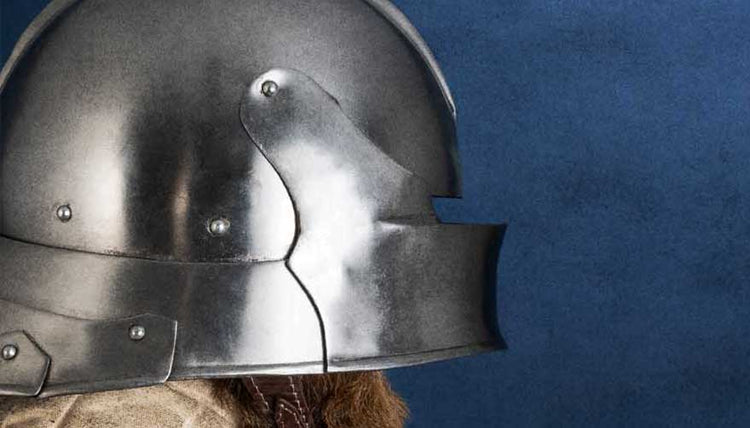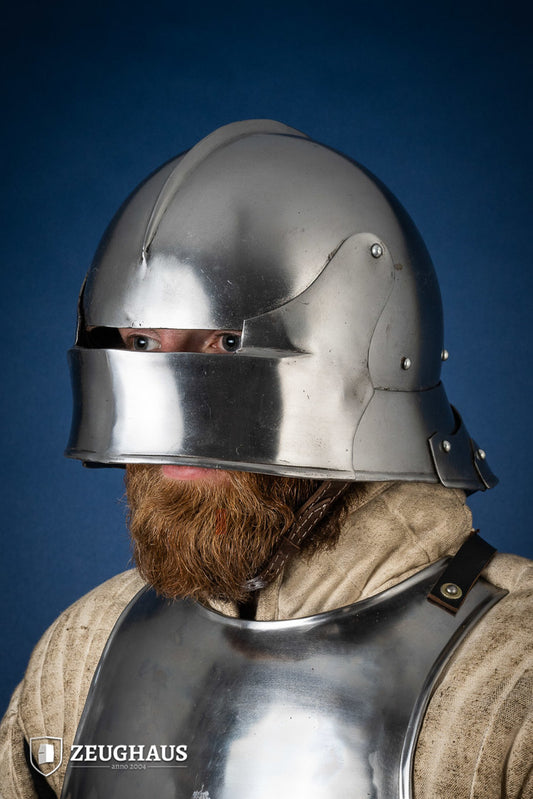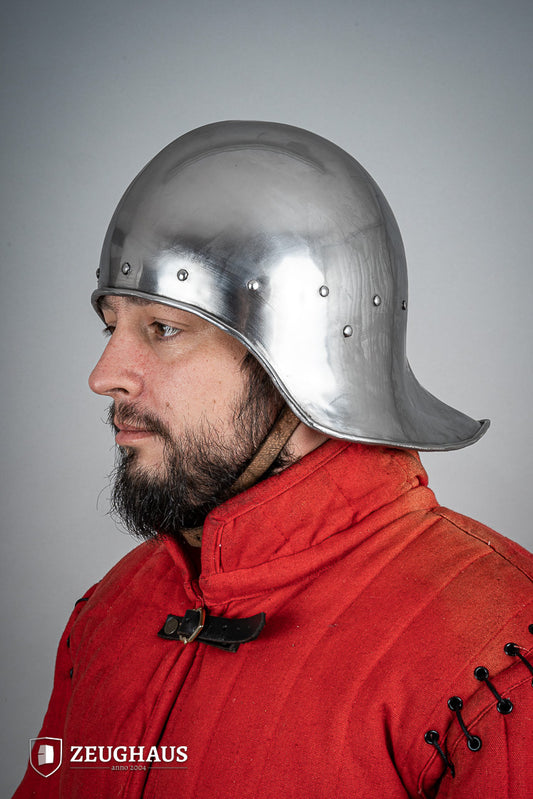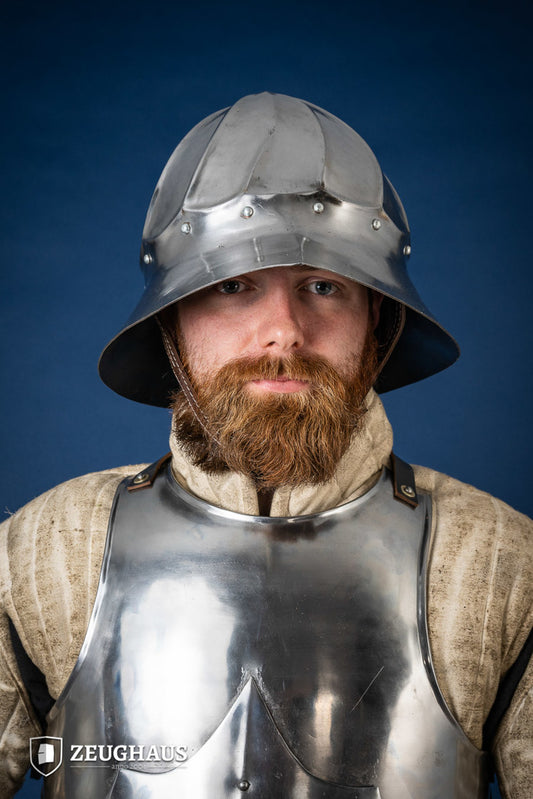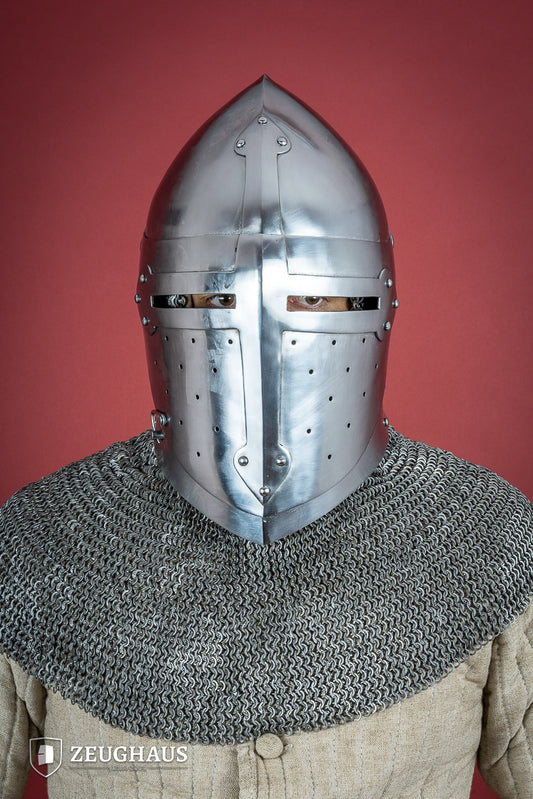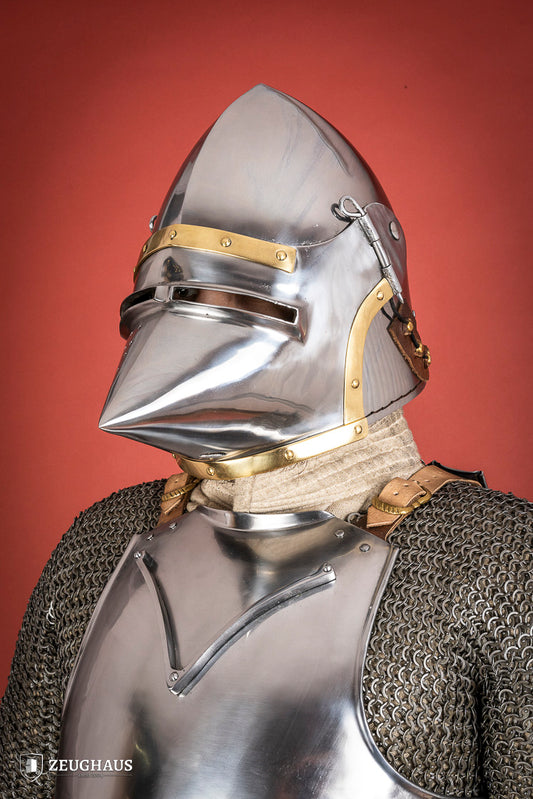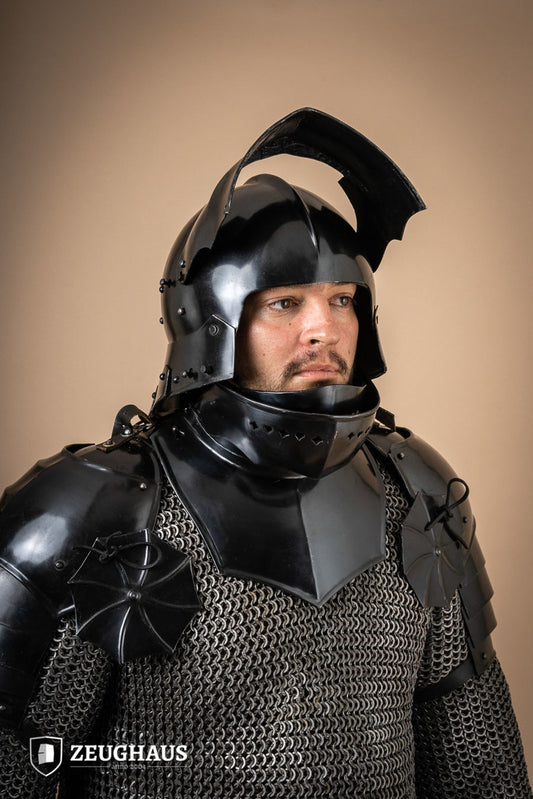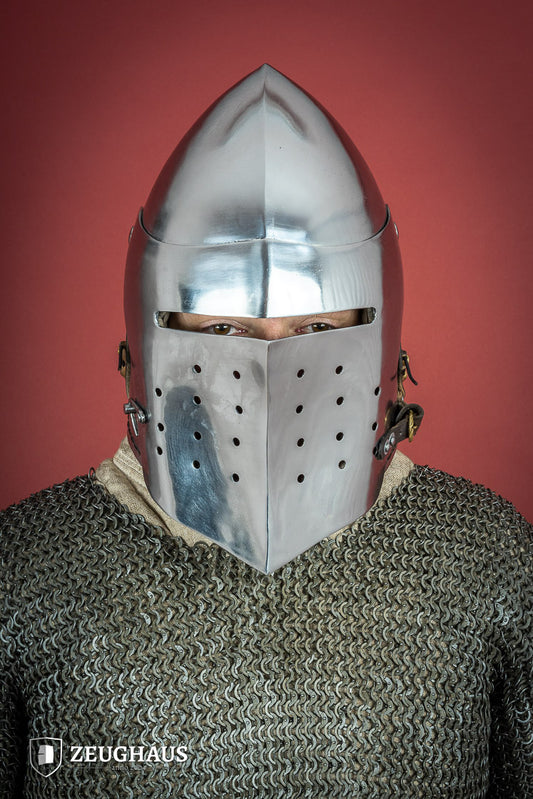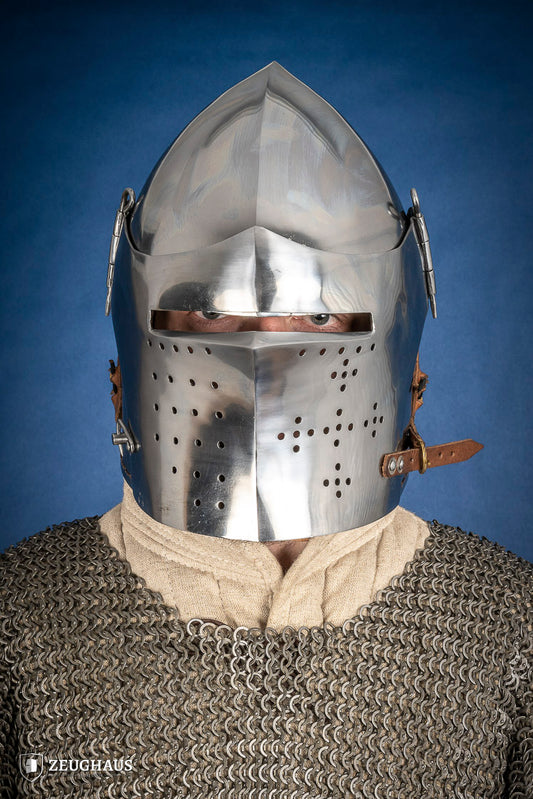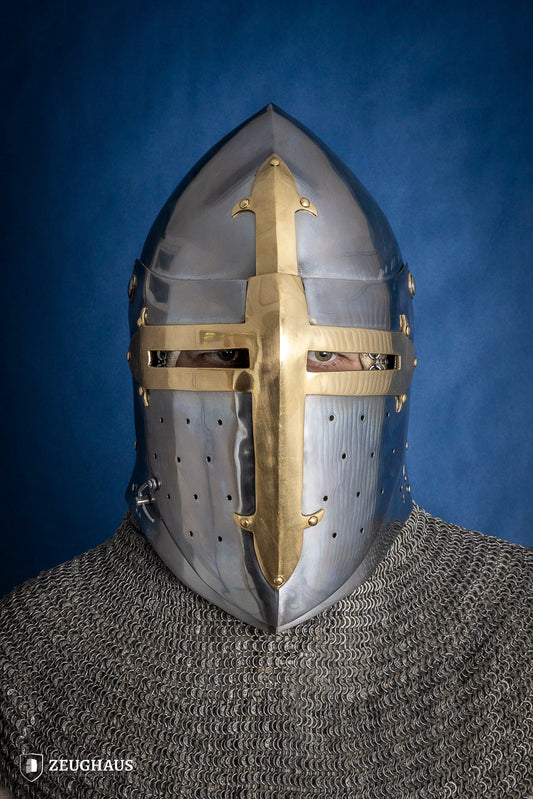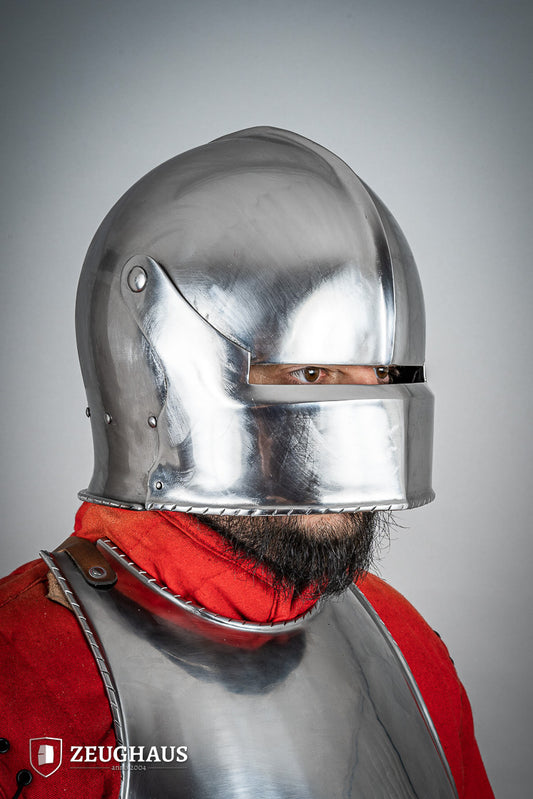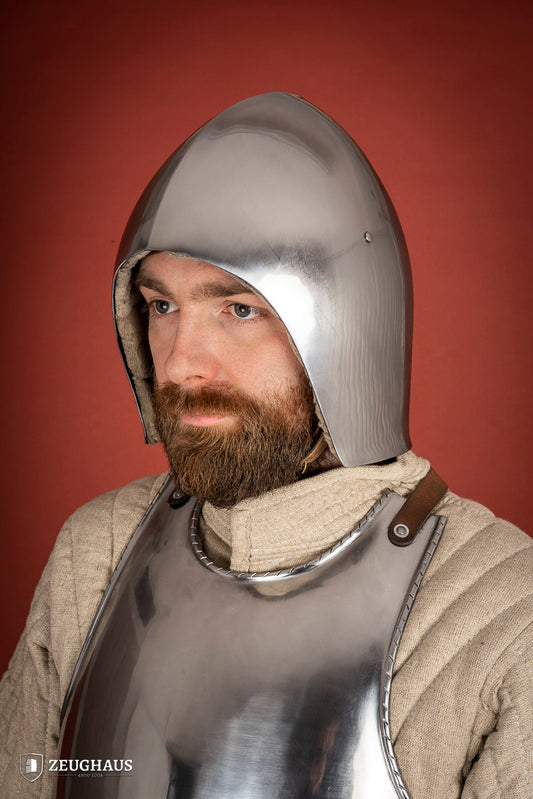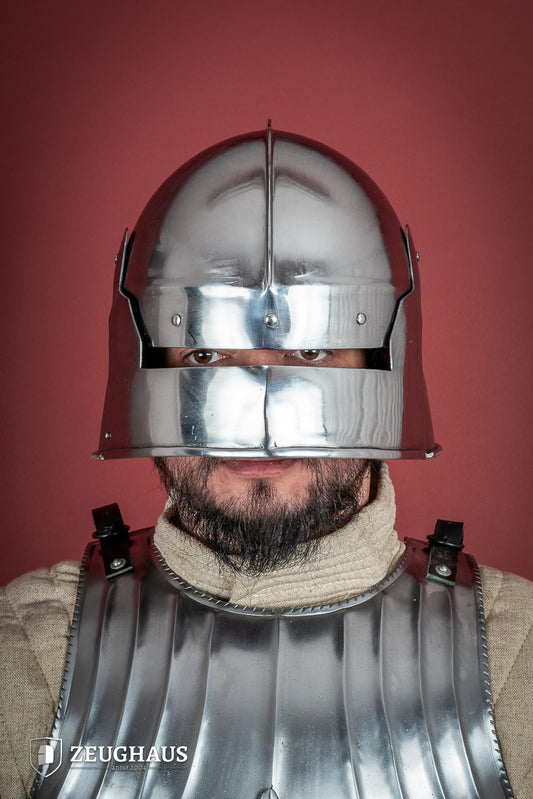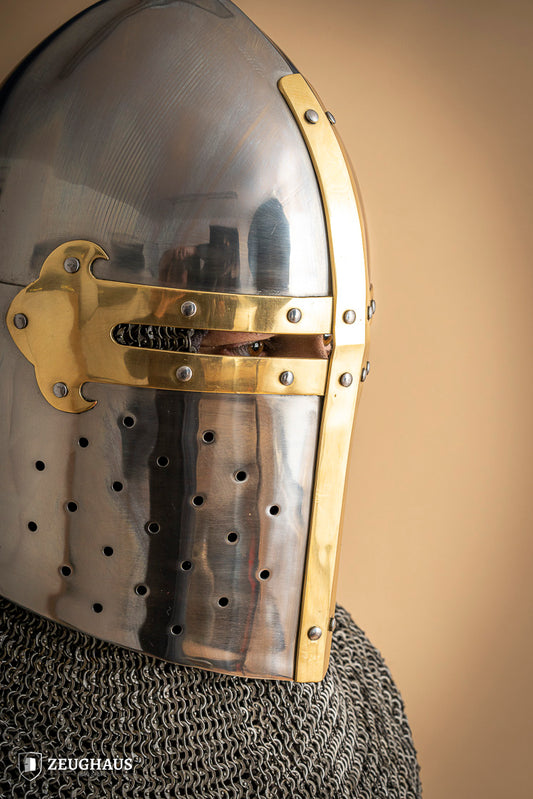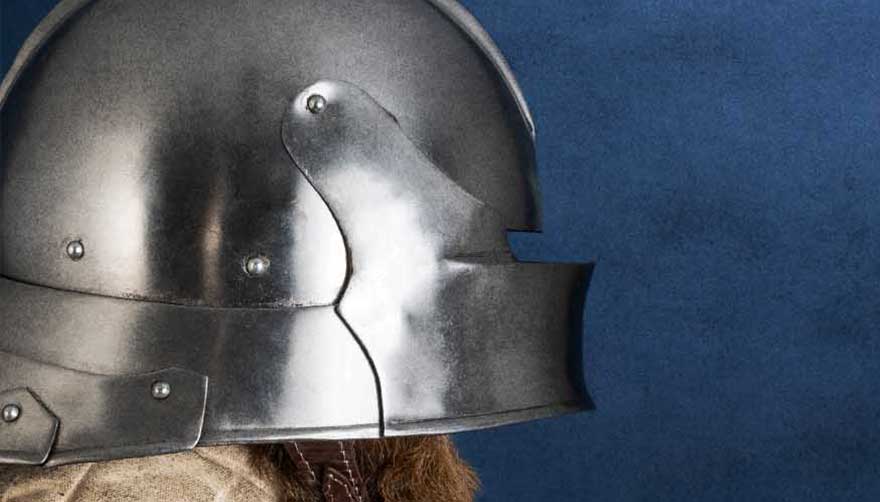The final period of the Middle Ages, the Late Middle Ages, is assigned by the majority of European historians to the period between 1250 and 1500. Conservative historical research characterizes the transition from the Middle Ages to the modern era as a period of crisis. There are many reasons for this assessment. Famines and epidemics, such as the Black Death, wiped out roughly half of the European population. In addition to this, civil wars, uprisings, and finally the Hundred Years’ War erupted in parts of Europe. Meanwhile, the Crusades ended with the defeat of the Christian forces, which badly damaged both chivalry and the feudal system.
But at the same time, the late Middle Ages are also a time of scientific, technological, and artisanal progress and the expansion of international trade routes.
Show and Fight - Two Sides of the Same Coin
If we look at the development of the helmet in the late Middle Ages, one thing quickly becomes apparent: not all helmet types that we assign to the era were used in battle. Characteristic of the period, for example, is the pot helmet, which has been continuously developed since the High Middle Ages. Their massive design, restricted freedom of movement, and daunting 10-kilogram weight made pot, bucket, and toad helmets an obstacle to wear despite their reliable protection. Accordingly, pot helmets were increasingly worn only in tournaments.
In battle, soldiers and knights preferred lighter and altogether more practical forms of helmets, such as the iron hat already introduced in the High Middle Ages.
The pelvic hood, also known as kettle hood or bascinet, was originally worn as a further development of the simple brain hood under the pot helmet or bucket helmet and became increasingly important as an independent helmet.
To be useful as an independent helmet and provide maximum protection, its shape was modified. The front edge of the helmet was pulled down to protect the forehead and ring armour mesh protected the neck. When worn as a complete hood, the sides of the head were additionally protected. Tapered to the top, the helmet could deflect blows.
Equipped with a flip-up visor, the kettle hood offered comprehensive protection but left the wearer the option of opening the face mask on hinges to look around or breathe freely without leaving the head unprotected.
Just like the upwardly pointed shape, the tapered shape of the visor’s intended effect was to minimize the surface area which could be attacked with stabs. The resulting shape of a dog’s snout led to the helmet’s German name “Hundsgugel” which means “hound’s hood.”
A further development of the kettle hood appears in the 15th century increasingly in the form of the sallet. The iron hat, modeled after the skull, protected the neck of the wearer with a cantilevered neck peak. In addition to closed variants such as the German Sallet, which completely covered the face and left only a slit open or was equipped with a half visor, the Burgundian Sallet, for example, is equipped with a full visor. The special shaping of the visor gave the sallet additional type designations, such as the bellows sallet.
In addition to improving the protective effectiveness and comfort of a helmet, improved craftsmanship techniques were increasingly used to give helmets a somewhat individual look. Closed helmets meant that the faces of their wearers were no longer recognizable in battle. Accordingly, other elements were required to enable identification or at least help differentiate friend from foe in battle. In addition, different helmets were typical for certain types of weapons. A noble ruler who equipped their bodyguard with Morion helmets, as we know them until today from the world-famous Swiss Guard, thus demonstrated power, wealth, and claim to rule.
The Special Charm of the Transition
Among the periods of the Middle Ages studied by historians, the Late Middle Ages is the era we know the most about today. Not least of all, it marks the beginning of an education that overcame class barriers. The rising literacy rates of society and the use of vernacular languages in literature instead of Latin provide us with easier access to the world people experienced in the late Middle Ages.
Characters from the late Middle Ages are particularly popular in LARP and reenactment for this reason as well.
If you are also enthusiastic about the eventful history of the Middle Ages, you’ll find the right helmet for your character as well as any other equipment with Zeughaus.

